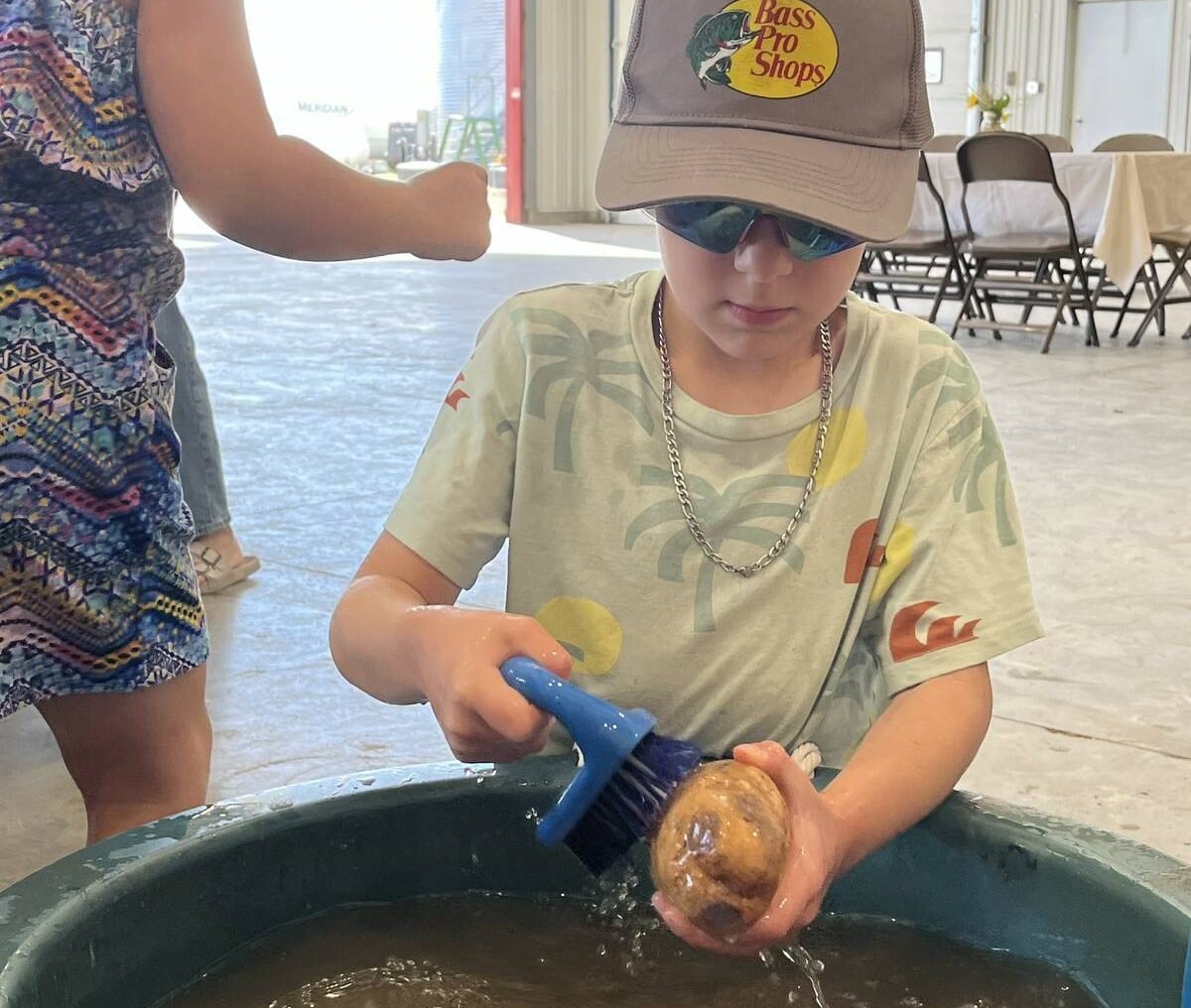Tomorrow’s farms will likely use new technology to produce crops for new markets. In our special report on pages 10-11, Western Producer reporter Mike Raine examines what agricultural futurists, economists and engineers predict for the prairie farm. They say robotics, information management, genetic engineering and new energy-livestock production loops are the future.
Joe e-mails his weekly update to Pharmafood Corp. on the status of his 90 acres of a specialty flax variety he grows under contract. He finishes, then walks over to the window to check the thermometer. It reads -2 C. When his father ran the farm, that would have given his dad a heart attack, fearing frost damage to his crops.
Read Also

Agri-business and farms front and centre for Alberta’s Open Farm Days
Open Farm Days continues to enjoy success in its 14th year running, as Alberta farms and agri-businesses were showcased to increase awareness on how food gets to the dinner plate.
But recently the Rob-5 frost-tolerant trait has become standard on new crop varieties.
In the future, farmers may spend less time sitting up at night worrying about frost and more time trying to decide which of the hundreds of new crop varieties to grow.
Wilf Keller, a plant breeder who helped develop canola, believes a galaxy of new crops are around the corner.
“Canola alone will have varieties with properties for everything from human health and drug components to industrial products,” said the National Research Council senior scientist in Saskatoon.
Keller said he believes segregated production allows the creation of varieties that contain natural compounds called phytosterols that reduce LDL cholesterol, which builds plaque on arteries. This could allow millions of people to protect their cardiovascular health through diet.
“Researchers haven’t even begun to explore all of the industrial lubricant uses for flax and rapeseed,” Keller said.
“We can create varieties of these crops that will not only replace current petroleum but deal with its shortcomings.”
From stronger, more healthful and useful crop varieties to robotic weed killers guided via satellite, scientists and engineers are setting the stage for the future of prairie farming.
That future may not be as far off as we think.
Larry Gusta, a University of Saskatchewan plant breeder, also points to the potential of new crops to improve the farm economy. Gusta is responsible for the discovery of Rob-5, a stress tolerance gene found in brome grass that might be the key to unlocking cold, heat and drought plant defences.
“We have the tools now to create crops that are far more weather tolerant,” he said. “That would allow western Canadian farmers to grow more profitable crops with higher yielding characteristics.”
The Rob-5 gene could allow breeders to expand the growing season with frost- and heat-tolerant canola, flax, cereals and vegetables.
Gusta said high value, high yield vegetable and field crops could help smaller producers continue farming.
Until now, only large corporate crop breeding programs could afford the hundreds of millions of dollars it costs to sequence a plant genotype.
But the cost is now down to tens of millions and many scientists expect it will soon cost only a few thousand dollars, which will send breeding programs into overdrive.
“In two or three years it (sequencing) will be the first thing you do,” Keller said. “It’s a map to breeding discoveries that will cut years off of new variety (releases).”
Faster variety development will help farmers catch changes in market demand more quickly, said Keith Degenhardt, a farmer from Hughenden, Alta., and chair of the Western Grains Research Foundation.
“It takes eight to 10 years to get new varieties of crops into farmers’ hands. Major developments might be 15 years from concept to farmers’ fields. Pretty hard to be market responsive,” he said.
“If we could drop that time to five years, farmers have a crop to plant while market signals were still fresh.”
Markets that signal demand for new plant-derived food and industrial oils will be more quickly met thanks to University of Lethbridge biochemist Randy Weselake, who has made breakthroughs in how oil is formed in oilseeds.
For example, flax is ideal for genetic modifications, partly because it doesn’t readily outcrop, he said.
“Creating specialty flax for bioplastics or biolubricants can be done. The market for products to replace petroleum is incredibly large.”
With changes to its seed oil metabolism, flax could become a major petroleum alternative crop in Western Canada, Weselake said.














